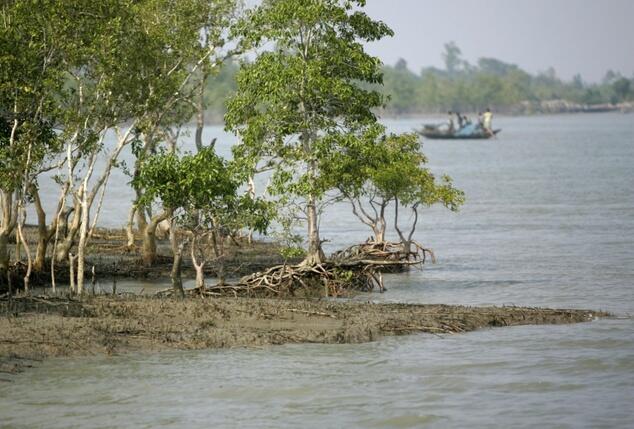The world’s largest mangrove forest, a World Heritage Site, should be listed as endangered due to a coal-fired power plant under construction in Bangladesh, urged a petition signed by 50,000 people and submitted to the UN Wednesday.
Classified by the UN’s culture and science organ, UNESCO, in 1997 as a natural treasure, the Sunderbans which straddles the border of India and Bangladesh, provides a defence against storm surges and cyclones to some four million people in the region.
At the same time, its 10,000 sq km (3,800 sq miles) expanse is home to some of the planet’s most iconic threatened species, including a population of about 100 tigers and the Ganges river dolphin.
The planned 1,320 Megawatt Rampal plant, a joint project by India and Bangladesh, would be powered each year by nearly five million tons of coal transported by boat along the ecosystem’s fragile waterways, boosting the risk of oil and coal spills.
Scheduled to open in 2018, the plant would also discharge, every day, nearly 125,000 cubic metres of chemically-tainted water used to cool generators, according to design specifications.
The site is located four kilometres (2.5 miles) upstream from a designated, inland “buffer zone” around the Sunderbans.
“Sacrificing the safety and livelihoods of millions of people who fish and farm in this region for decades to come is unacceptable,” said Payal Parekh of environmental group 350.org, which helped organise the petition and presented it to UNESCO officials in Paris.
Mangrove forests grow in tropical and subtropical zones between ocean and river.
– Decision pending –
The UN body’s World Heritage Committee — which selects sites and has the power to classify existing ones as “in danger” — will meet next week in Istanbul.
A UNESCO mission visited the Sunderbans last March to assess potential threats, including from the coal plant, but has not announced any decision.
Of the more than 1,000 World Heritage Sites in the world, fewer than 50 are officially listed endangered.
The status serves to alert the international community to the potential loss of a precious asset, and allows the committee to tap into a World Heritage Fund.
In April, thousands of locals demonstrated against the power plant, fearing its impact on the environment and their livelihoods.
In 2014, a boat spilt thousands of gallons of oil into a neighbouring forest. Inhabitants were forced to use spoons, pots and sponges to clean up the sludge.
“My 65-acre (26-hectare) land in Rampal, where the coal plant is being built, was forcefully acquired in 2011 when the project work began,” Sushanta Ghosh from the Krishi Jami Rakha Committee, a farmers’ association, said in a statement.
When he and other farmers resisted, “we were slapped with false charges,” including arson and damaging public property, Ghosh claimed.
India and Bangladesh signed a deal in 2010 to jointly develop the $1.7-billion (1.5 billion-euro) power plant.
Source: AFP











